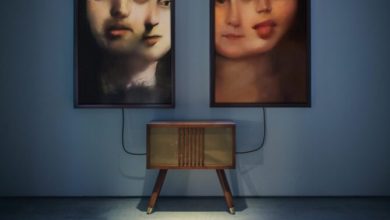The dialogue between human and machine
Maybe the most human thing about us is that we have this desire for anything which is not us or outside of us. Humanity is heavily invested in thinking about the not human, beyond human, spirits, energies, horoscopes and so on. In other words, a human challenge is what we create ourselves. The new correlation between a human and the machine has invented a cutting-edge technology called artificial intelligence. AI is trying to simulate the human brain in activities such as analysing data, making decision and creativity. However, the power of computers has been increasing so dramatically that they are becoming more intelligent than humans. It is speculated that AI will soon far surpass human cognitive abilities.
In the field of using AI in art, human and computer interaction is provoking many questions is AI outside humanity or is it a creation in a very human-controlled way. Indeed, we are using artificial intelligence as a human creation, and it is just another human invention. The interaction of the public with machine creativity might connotate a sustainable human expression through AI which might mean the dramatic end of the artist. Harold Cohen is the only artist who would ever be able to have a posthumous exhibition of new works created entirely after his death in 2016.
However, the analogue between the artist and his team, the pianist and his piano, is a kind of relationship between a ‘doer’ and a ‘thinker’. A visionary communicates his vision to a machine-learning system which then produces the actual output. AI still needs the artist to trigger the commands.
Academic research has shown that human brain simulation technology provides an opportunity for artwork to be improved and to become dynamic. Alongside these developments, several critics have questioned whether introducing machinery into art is truly a way of introducing competition and enhancing human creativity or whether it is only artistic cloning. According to Dr Ahmed Elgammal, the core founder and manager of the Art and Artificial Intelligence Laboratory at Rutgers, today’s world has dynamically constrained human imagination and creativity. Machines are therefore essential for and competent in assessing and exploring these dynamic possibilities. Without an adequate opportunity for invention, creativity remains highly elusive. So anyone using AI can advance his/her artistic work and expand creative ideas somewhere.
On the other hand, through AI systems, the collective dataset in the cyber-age has been used to predict models to enhance the human lifestyle. There are also other ways in which AI-based generative art systems reflect human societies and culture. The more individuals reflect their human cultural legacies, the deeper they can tap into enriching human life and help us better connect to the eternal thread of our historical stories. We live in a world of constant activity, technological breakthroughs and change, and we have to work intensely on systems which can cope with the emerging technologies. Participating in transmitting our cultural traditions through the new technologies might offer a closer connection with the more sustainable recent past over the long term. It is a way to preserve the culture, history and adaptive strategies of our nation’s cultural legacies.
Large numbers of all of the previous components are interacting in non-linear ways. They are inaccessible and murky systems showing how many features, individual lines and parts of lines make up the whole image. Galanter and Levy suggested that complexity is a matter of content, not of complicated technique. Complexity theory is a conceptual understanding of the many emerging systems of generative art. Under the general rubric of complexity theory, there are various systems, and different kinds of methods have been studied, compared, contrasted and mathematically and computationally modelled. But this complexity requires a careful balancing of order and chaos concerning the context of the original image (Fry, 2018).
